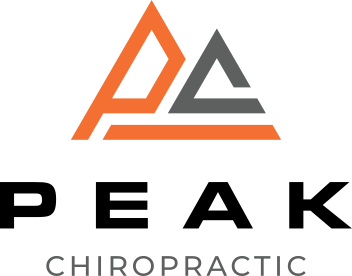When you're dealing with a sports injury, knowing the best techniques for recovery can make all the difference. You might think rest is enough, but incorporating methods like ice therapy, compression techniques, and physical therapy can greatly speed up your healing process. Each approach plays a unique role in not just recovery but also in preventing future injuries. As you explore these strategies, you'll discover how simple adjustments can enhance your overall rehabilitation journey. So, what are the key techniques you should consider to get back in the game stronger than before?
Rest and Recovery
Rest and recovery are essential components of sports injury rehabilitation. When you're injured, it's vital to give your body the time it needs to heal. Pushing through pain might seem tempting, but it often leads to more severe injuries or prolonged recovery times. Instead, prioritize rest to allow your muscles, ligaments, and tendons to repair themselves effectively.
During the recovery phase, listen to your body. If you feel pain, it's a clear sign that you should take a step back. Incorporate rest days into your training schedule to help prevent future injuries. Even on days when you feel good, consider lighter activities that don't put strain on the affected area. Gentle movements, like stretching or low-impact exercises, can promote blood flow without risking further damage.
It's also helpful to create a structured recovery plan. This plan should include specific rest periods, rehabilitation exercises, and gradual reintroduction to your sport. By doing so, you'll make certain that you're not only addressing the injury but also building strength and flexibility in the long term. Remember, skipping rest can lead to setbacks that might sideline you longer than necessary.
Lastly, consider the mental aspect of recovery. Use this time to focus on your nutrition, hydration, and mental well-being. Engaging in relaxation techniques, like meditation or yoga, can aid in your overall recovery process. Embrace this time to heal, and you'll return to your sport stronger than before.
Ice Therapy
Ice therapy is often a go-to method for reducing swelling and pain after a sports injury. When you apply ice to the affected area, it constricts blood vessels, which helps minimize inflammation and numbs the pain. This quick intervention is fundamental in the initial stages of recovery, especially within the first 48 hours following an injury.
To effectively use ice therapy, you'll want to apply ice packs or a cold compress directly to the injured area for about 15 to 20 minutes at a time. Make sure to wrap the ice in a cloth or towel to protect your skin from frostbite. You can repeat this process every couple of hours, especially if you're experiencing significant swelling or discomfort.
It's important to listen to your body during this process. If the ice causes excessive discomfort or pain, remove it immediately. On the other hand, if you notice that swelling persists, you might need to adjust the duration or frequency of your ice application.
In addition to pain relief, ice therapy can improve your overall recovery time. By managing inflammation, you're setting the stage for a more effective healing process, which is critical for returning to your sport safely.
Compression Techniques
Compression techniques play an essential role in managing swelling and providing support during the recovery process after a sports injury. By applying pressure to the injured area, these techniques help reduce inflammation and promote blood flow, which can speed up your recovery.
You can use various methods to achieve effective compression, and it's vital to choose the right one for your specific injury.
Here are some common compression techniques you might consider:
- Elastic Bandages: These versatile bandages can be wrapped around the injured area, allowing you to adjust the tightness as needed.
- Compression Sleeves: Designed for specific body parts, these sleeves provide consistent compression without the hassle of wrapping.
- Cold Compression Therapy: Combining ice and compression, this method reduces swelling while keeping the injured area cool.
- Compression Wraps: These wraps often come with Velcro or elastic components, making them easy to apply and adjust.
When using compression techniques, be mindful not to wrap too tightly, as this can restrict blood flow. You should monitor your skin for any signs of discoloration or numbness.
It's important to balance compression with rest and elevation to maximize the healing process. Incorporating these techniques into your recovery plan can greatly enhance your comfort and speed up your return to sports.
Always consult a healthcare professional if you have concerns about your injury or the best methods to use.
Elevation Methods
When you've sustained a sports injury, elevating the affected area can be essential for reducing swelling and promoting healing.
You'll want to explore effective techniques to guarantee you're getting the most benefit from elevation.
Let's discuss why this method is important and how to implement it properly.
Importance of Elevation
Elevating an injured limb can make a significant difference in your recovery process. By keeping the injured area elevated above the heart, you'll help reduce swelling and promote better blood circulation. This simple action can lead to faster healing and less discomfort.
Here are some key benefits of elevation:
- Reduces Swelling: Elevation helps decrease fluid buildup around the injury, minimizing swelling.
- Improves Blood Flow: Keeping the limb elevated can enhance blood circulation, supplying essential nutrients for healing.
- Decreases Pain: By reducing inflammation and swelling, elevation can help alleviate pain, making you feel more comfortable.
- Promotes Faster Recovery: With less swelling and pain, you're likely to recover more quickly and get back to your favorite activities sooner.
Incorporating elevation into your recovery routine is essential. It requires minimal effort but yields significant benefits.
Make sure to elevate your injured limb regularly, especially during the initial stages of injury.
Techniques for Effective Elevation
Effective elevation plays an essential role in your recovery journey. It helps reduce swelling and promotes better blood circulation, which accelerates healing.
To effectively elevate an injured limb, find a comfortable position where you can keep it above heart level. This may involve using pillows or cushions to support your arm or leg.
If you're dealing with a lower limb injury, lie down on a flat surface and prop your leg up on several pillows. Make sure that your knee is straight and your foot is elevated higher than your hip.
For upper limb injuries, sitting in a chair with your arm resting on a table or couch can work wonders.
Don't forget to take breaks! Elevate your injury for about 30 minutes every few hours, especially during the initial days post-injury. You can also combine elevation with ice therapy. Applying ice for 15-20 minutes while the limb is elevated can greatly reduce swelling.
Lastly, listen to your body. If you experience increased pain or discomfort while elevating, adjust your position or consult a healthcare professional.
Following these techniques will help you maximize the benefits of elevation in your recovery process.
Physical Therapy
When it comes to recovering from sports injuries, physical therapy plays an essential role.
You'll benefit from personalized treatment plans that cater to your specific needs, along with strengthening exercises that focus on rebuilding your strength.
Additionally, manual therapy techniques can help alleviate pain and improve your mobility, getting you back in the game faster.
Personalized Treatment Plans
Creating a personalized treatment plan is essential for effective recovery from sports injuries. When you tailor your rehabilitation to your specific needs, you increase the chances of a quicker and more complete recovery. A one-size-fits-all approach often overlooks individual differences in injury types, fitness levels, and recovery goals.
To create an effective personalized treatment plan, consider the following elements:
- Assessment: Start with a thorough evaluation of your injury and overall physical condition. This helps identify the best approach for your recovery.
- Goals: Set clear, achievable goals based on your lifestyle, sport, and aspirations. Knowing what you want to achieve keeps you motivated.
- Therapeutic Techniques: Incorporate a mix of physical therapy techniques that suit your injury and progress. Methods may include manual therapy, ultrasound, or electrical stimulation.
- Feedback and Adjustments: Regularly review your progress with your therapist. Adjust the plan as needed to guarantee you're on track and addressing any setbacks.
With a customized treatment plan, you'll be better equipped to recover effectively and return to the sports you love.
Strengthening Exercises Focus
Strengthening exercises play an essential role in your recovery from sports injuries, helping to restore muscle function and prevent future issues. When you incorporate these exercises into your rehab routine, you'll promote healing and build resilience in the affected area.
Start with low-impact movements to avoid straining your injury, gradually increasing intensity as you gain strength.
Focusing on specific muscle groups related to your injury can enhance your recovery. For instance, if you've injured your knee, targeting the quadriceps, hamstrings, and calves through exercises like leg presses or step-ups will be beneficial.
Remember to maintain proper form to prevent re-injury.
Consistency is key. Aim to integrate strengthening exercises into your routine several times a week. As you progress, you can add resistance bands or weights to challenge your muscles further.
Don't rush the process; listen to your body and adjust your exercises accordingly.
Incorporate mobility and flexibility work into your regimen as well. This combination not only aids in recovery but also guarantees that your muscles remain balanced and functional for your next athletic endeavor.
Stay committed, and you'll likely see significant improvement in your performance and overall strength.
Manual Therapy Techniques
Alongside strengthening exercises, manual therapy techniques can greatly enhance your recovery journey.
These hands-on approaches focus on manipulating your muscles and joints to relieve pain, improve mobility, and promote healing. By incorporating manual therapy into your routine, you'll likely notice faster progress and a more thorough recovery.
Here are some common manual therapy techniques you might consider:
- Massage Therapy: This helps reduce muscle tension and enhance blood flow to injured areas.
- Joint Mobilization: Gentle movements can restore proper function and range of motion to stiff joints.
- Myofascial Release: This technique targets the connective tissue surrounding muscles, alleviating tightness and pain.
- Trigger Point Therapy: Focusing on specific areas of muscle tightness helps release knots and reduce discomfort.
Each of these techniques can be tailored to your specific injury and needs, ensuring a personalized approach to recovery.
Consult with a qualified physical therapist to determine which methods will work best for you.
With the right combination of manual therapy and strengthening exercises, you'll be well on your way to getting back in the game.
Active Rehabilitation
Active rehabilitation is an essential component of sports injury recovery, focusing on engaging your body in movement to promote healing. Instead of relying solely on rest, you'll actively participate in your recovery process. This approach helps improve strength, flexibility, and overall function, enabling you to return to your sport more effectively.
When you start active rehabilitation, it's important to follow a structured program tailored to your specific injury. Work closely with a physical therapist or a trained professional who can guide you through exercises designed to target the affected area. They'll help you understand the right movements to perform, ensuring you don't exacerbate your injury.
Incorporating low-impact activities, such as swimming or cycling, can be beneficial in maintaining your cardiovascular fitness while minimizing stress on your injury. Gradually, you'll want to progress to more functional exercises that mimic the movements required in your sport. This progressive loading helps your body adapt and strengthens the muscles around your injury.
Listening to your body is vital during this process. If you experience pain or discomfort, don't hesitate to adjust your routine. Recovery isn't a one-size-fits-all approach, so be patient and persistent.
As you engage in active rehabilitation, you'll not only speed up your recovery but also build resilience, reducing the risk of future injuries. By taking charge of your rehabilitation journey, you empower yourself to return to your sport stronger and more capable than before.
Nutritional Support
Proper nutrition plays an essential role in sports injury recovery, as it fuels your body and supports the healing process. When you're healing from an injury, your body requires extra nutrients to repair tissues and reduce inflammation. By focusing on your dietary choices, you can greatly enhance your recovery time and overall well-being.
To support your recovery, think about incorporating the following nutritional strategies:
- Protein: Aim for lean sources like chicken, fish, legumes, and dairy. Protein is vital for repairing muscles and tissues.
- Healthy Fats: Include nuts, avocados, and olive oil in your diet. Healthy fats can help reduce inflammation and provide energy.
- Fruits and Vegetables: These are rich in vitamins, minerals, and antioxidants. Foods like berries, spinach, and oranges can boost your immune system and aid in recovery.
- Hydration: Don't underestimate the importance of water. Staying hydrated helps maintain peak bodily functions and supports nutrient transport.
You might also want to reflect on supplements if you're struggling to meet your nutritional needs through food alone.
Always consult with a healthcare professional or a dietitian to confirm you're making the right choices for your specific injury and recovery goals.
Pain Management
When managing pain from a sports injury, you have several effective options at your disposal.
Medication can provide immediate relief, while physical therapy techniques help strengthen your body and prevent future issues.
Understanding these approaches is key to your recovery journey.
Medication Options
Pain management is often essential in the recovery process from sports injuries, and various medication options can help you find relief. Depending on the severity and type of your injury, you might consider over-the-counter medications or prescription options.
Always consult a healthcare professional before starting any medication.
Here are some common medication options for pain management:
- Nonsteroidal Anti-Inflammatory Drugs (NSAIDs): These can reduce inflammation and alleviate pain. Examples include ibuprofen and naproxen.
- Acetaminophen: This is effective for mild to moderate pain and is gentler on the stomach than NSAIDs, but it doesn't reduce inflammation.
- Topical Analgesics: Creams or gels containing ingredients like menthol or capsaicin can provide localized pain relief without systemic side effects.
- Prescription Pain Relievers: For more severe pain, your doctor might prescribe stronger medications, such as opioids, but these should be used cautiously due to the risk of dependence.
Physical Therapy Techniques
Utilizing physical therapy techniques can greatly enhance your recovery from sports injuries and help manage pain effectively. These techniques focus on restoring movement, improving function, and alleviating discomfort. A skilled physical therapist will assess your specific needs and create a tailored plan for you.
One common technique is manual therapy, which includes hands-on manipulation of muscles and joints to reduce pain and improve range of motion.
Therapeutic exercises are also essential; they strengthen the injured area, promote healing, and prevent future injuries. Stretching routines can enhance flexibility, making it easier for you to return to your sport.
Modalities like heat, ice, ultrasound, and electrical stimulation can provide immediate pain relief and reduce inflammation. Your therapist may also teach you breathing techniques and relaxation strategies to help manage pain during recovery.
Incorporating these physical therapy techniques into your recovery plan empowers you to take charge of your healing process.
Psychological Strategies
In the journey of recovering from a sports injury, psychological strategies play a crucial role in your overall healing process. It's easy to feel discouraged or anxious when you're sidelined, but maintaining a positive mindset can greatly influence your recovery.
Here are a few effective strategies to help you stay mentally strong:
- Visualization: Picture yourself performing well and returning to your sport. This mental rehearsal can enhance your motivation and confidence.
- Goal Setting: Break down your recovery into manageable goals. Celebrate small victories to keep your spirits high and track your progress.
- Mindfulness and Relaxation Techniques: Practices like meditation or deep breathing can help reduce anxiety and improve your focus, allowing you to stay in the moment and not dwell on setbacks.
- Seek Support: Surround yourself with friends, family, or teammates who understand your journey. Sharing your feelings can provide comfort and encouragement.
Gradual Return to Activity
After building a solid mental foundation through psychological strategies, it's time to focus on your physical recovery. A gradual return to activity is vital to guarantee that your body heals properly and prevents re-injury. Start by consulting your healthcare provider or physical therapist to get a tailored plan that suits your specific needs.
Begin with gentle movements and low-impact activities like walking or swimming. These exercises help maintain your cardiovascular fitness without stressing the injured area. Listen to your body; if you experience pain, scale back.
Incorporate flexibility and strength training as you progress, focusing on the muscles surrounding the injury. This approach not only aids recovery but also improves overall stability.
As you gain confidence and strength, gradually increase the intensity and duration of your workouts. Set realistic goals for yourself, celebrating small achievements along the way. It's important to be patient—rushing back into intense training can lead to setbacks.
Track your progress and adjust your activity levels as needed. Additionally, consider cross-training to keep your overall fitness while minimizing strain on the injured area. For example, if you're recovering from a knee injury, cycling might be a good alternative to running.
Conclusion
Incorporating these ten reliable techniques into your recovery plan can make a significant difference in healing from sports injuries. By prioritizing rest, utilizing ice and compression, and engaging in physical therapy, you're setting yourself up for success. Don't forget the importance of nutrition and psychological strategies to keep you motivated. Remember, a gradual return to activity not only helps prevent re-injury but also boosts your confidence. Stay committed, and you'll be back in the game stronger than ever!



